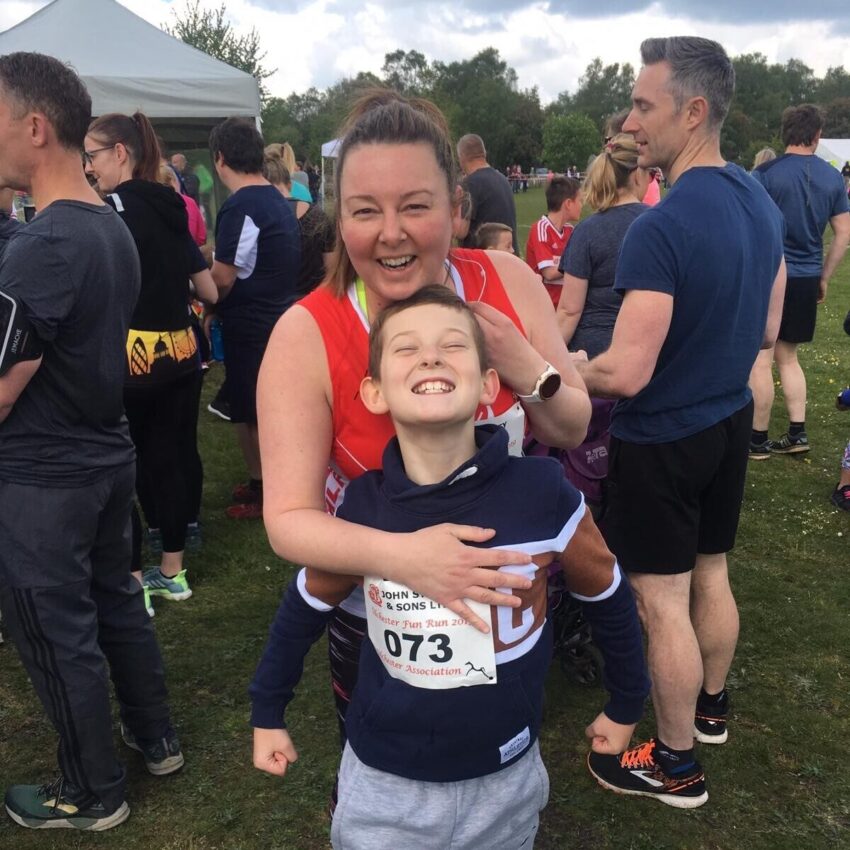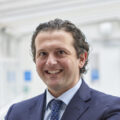The David Procedure, an aortic valve-sparing technique, requires a high level of surgical skill to get right. However, it can make a big difference to a patient’s outcomes particularly if they are young. Our heart experts met with Shelley, a 37-year-old mum of three, to hear about her experiences after having this procedure at our centre.
Like most mums, Shelley had a very busy lifestyle juggling work as a Parish Secretary at her local church and raising her young children aged six, eight and nine. In her free time, she liked to stay active regularly running 5km and playing netball to unwind from her daily stresses. Life could be a little hectic, but she felt in great shape and felt on top of everything.
However, Shelley had known for quite some time that her heart health and that of her children might be at risk. Her father and uncle both sadly passed away from sudden arrhythmic death syndrome (SAD) before her children were born, and her remaining paternal uncle was diagnosed with Brugada syndrome – a life-threatening, inherited arrhythmia. For this reason, her children had been annually monitored since birth in case they had inherited the condition too.

Unfortunately, things took a difficult turn for Shelley’s family in early 2018, when doctors detected unusual electrical activity in her daughter’s heart during one of their routine tests. To be safe, doctors implanted a loop recorder device in her daughter’s chest to continuously monitor its activity and detect anything suspicious as soon as possible.
Although this provided some comfort for Shelley, as her daughter was being monitored around the clock, she felt concerned about the health of her own heart. Despite her family history, her doctors were not routinely monitoring her heart and so she went to her GP to get it checked – just in case. Luckily, she wasn’t found to have problems with her heart rhythm, but her doctors did find her ascending aorta to be enlarged at the root. She was quite surprised by this, as she explains: “I was a little breathless and tired at times, but didn’t think anything of it. Only later did I find out that this was a symptom of my aortic aneurysm.”
An aortic root aneurysm is caused by the weakening of the walls of the ascending thoracic aorta, causing it to bulge. They often grow slowly and don’t exhibit any symptoms to start, making them difficult to detect. Shelley explains that following her diagnosis, her doctors gave her treatment to control her blood pressure but recommended a ‘watch and wait’ approach before considering surgery to correct her aneurysm. They felt that as the enlargement was relatively small and she didn’t have many symptoms, they could just continue to monitor her condition.
However, she explains:
“After doing some online research around aortic aneurysms, my husband and I were naturally quite worried and didn’t want to wait for the worst to happen. We had private family health insurance through his work and thought it best to get a second opinion.”
Soon after, Shelley and her husband met a private consultant cardiologist, Dr Savio D’Souza. Following his assessment, they found her aortic valve to have a moderate-to-severe leak, caused by the aortic root aneurysm. As this could be serious if not corrected, Dr D’Souza referred Shelley to the care of Mr Cesare Quarto, consultant cardiac surgeon at Guy’s and St Thomas’ Specialist Care to help find a surgical solution.
Recommending a valve-sparing procedure
A healthy aortic valve normally closes after blood is pumped out of the heart, to prevent the backflow of blood. As an aortic root aneurysm stretches the aortic valve, it cannot fully close, resulting in blood flowing back into the heart. This valve leakage can lead to a range of complications, including blood clots and organs not receiving enough blood.
The David Procedure is a surgical technique which spares a healthy aortic valve, by replacing the weakened section of the ascending aorta with an artificial tube graft. As the stretching pressure of the aneurysm is removed from the healthy aortic valve after surgery, it can return to its normal function.
“The David Procedure is unfortunately not suitable for every patient with an aortic root aneurysm, as it depends on their aortic valve being healthy. However, it is of enormous benefit if a patient can have it performed – particularly if they are young. Although replacing aortic valves is a safe and suitable option for many, they do come with problems,” explains Mr Quarto.
“Biological tissue valves, which are made with cow, pig or human heart tissue, degenerate over time and need replacing after 10 or 15 years. Mechanical valves – which are an alternative option – last much longer, but patients need to take blood-thinning drugs for the rest of their lives to prevent blood clots. We therefore do what we can to avoid replacing healthy aortic valves.
“Fortunately, Shelley was suitable for the David Procedure and I recommended we complete it as soon as possible, as her condition appeared to be worsening,” explains Mr Quarto.
Shelley had the David Procedure a month later as she didn’t want to wait any longer. After a one-week hospital stay, she was referred to a local cardiac rehabilitation team and has since made a full recovery.
“I feel amazing since the operation,” Shelley explains. “I feel like my life is returning back to normal, which I never believed would be possible. I have started running again and I’m slowly getting back to completing 5km in 30-minutes. I’m just 5 minutes off right now, but I’m sure I’ll get there!
“With my private health insurance, I admit I could have gone to any hospital and seen any specialist I wanted. But as soon as I met Mr Quarto, I was instantly at ease. No question was ever too much for him.
“The aftercare has been amazing. Following the surgery, they discovered through a biopsy that I had Takayasu’s arteritis which was causing the damage to my aorta. They also conducted a genetic test and found that I’m at risk of Brugada syndrome.” Shelley explains.
Takayasu’s arteritis is a rare autoimmune disorder that can damage the aorta and its main branches. It results in narrowed or blocked arteries, or weakening of artery walls causing aneurysms. It commonly affects girls and women under 40 years of age.

“I have since started treatment to control my Takayasu arteritis after Mr Quarto referred me to a great rheumatologist. I feel at ease now, as my heart is continually being monitored – which is very important when you’re a mum with young children. I cannot recommend the Royal Brompton Hospital enough. Their staff really go beyond the call of duty and nothing is too much trouble,” says Shelley of her experiences.
Mr Quarto adds: “I was incredibly pleased with Shelley’s results and that we managed to capture the underlying cause to help prevent more damage occurring.”
Aortic root aneurysm symptoms
Tenderness or pain in the chest
Chest pain during exercise
Back pain
Cough
Hoarseness
Shortness of breath
Risk factors
Age
Gender – men are two-to-four times greater risk
High blood pressure and/or cholesterol
Smoking
Family history of an aortic aneurysm
Related content
-
Aortic aneurysm
Aortic aneurysm occurs when a part of the aorta becomes weak and becomes enlarged.
-
Cardiac surgery
Our consultants are at the forefront of cardiac surgery, pioneering a range of minimally invasive procedures.
-
Valvular heart disease
Heart valve disease occurs when the valves of the heart become diseased or damaged.
